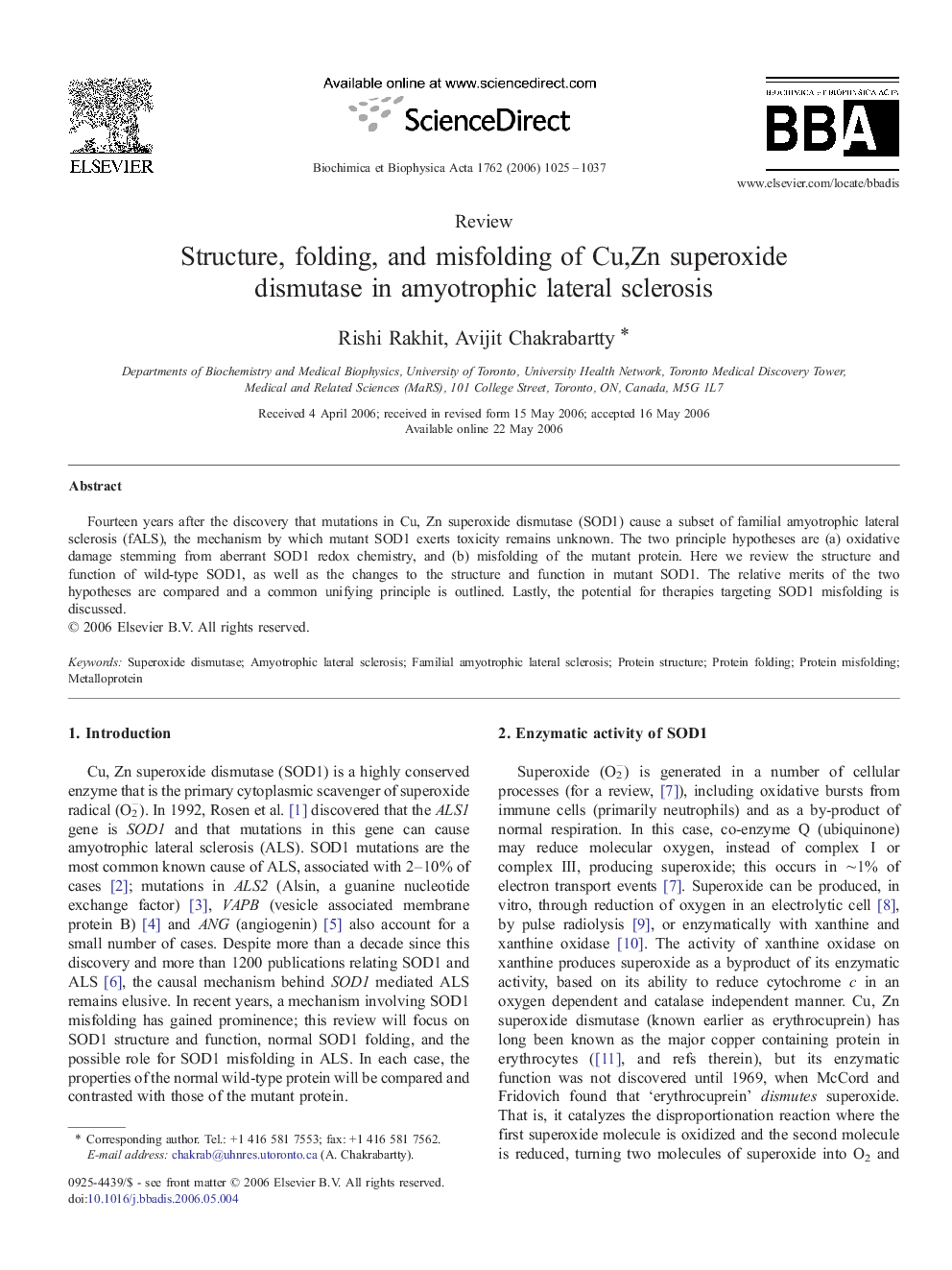| Article ID | Journal | Published Year | Pages | File Type |
|---|---|---|---|---|
| 1905887 | Biochimica et Biophysica Acta (BBA) - Molecular Basis of Disease | 2006 | 13 Pages |
Abstract
Fourteen years after the discovery that mutations in Cu, Zn superoxide dismutase (SOD1) cause a subset of familial amyotrophic lateral sclerosis (fALS), the mechanism by which mutant SOD1 exerts toxicity remains unknown. The two principle hypotheses are (a) oxidative damage stemming from aberrant SOD1 redox chemistry, and (b) misfolding of the mutant protein. Here we review the structure and function of wild-type SOD1, as well as the changes to the structure and function in mutant SOD1. The relative merits of the two hypotheses are compared and a common unifying principle is outlined. Lastly, the potential for therapies targeting SOD1 misfolding is discussed.
Keywords
Related Topics
Life Sciences
Biochemistry, Genetics and Molecular Biology
Ageing
Authors
Rishi Rakhit, Avijit Chakrabartty,
